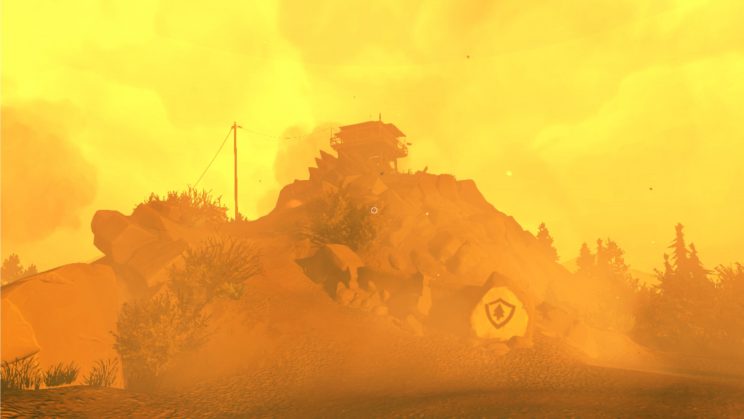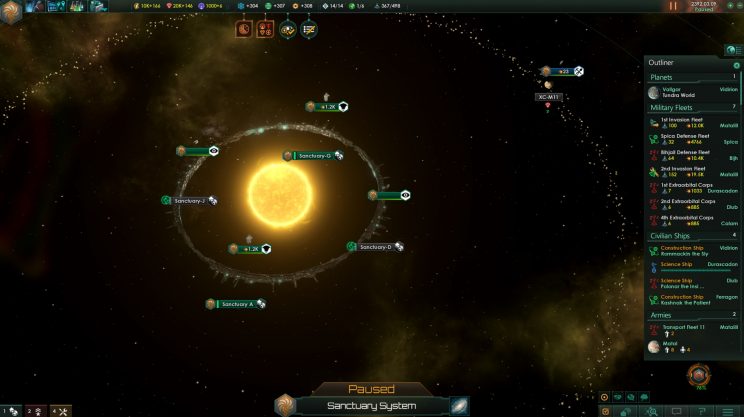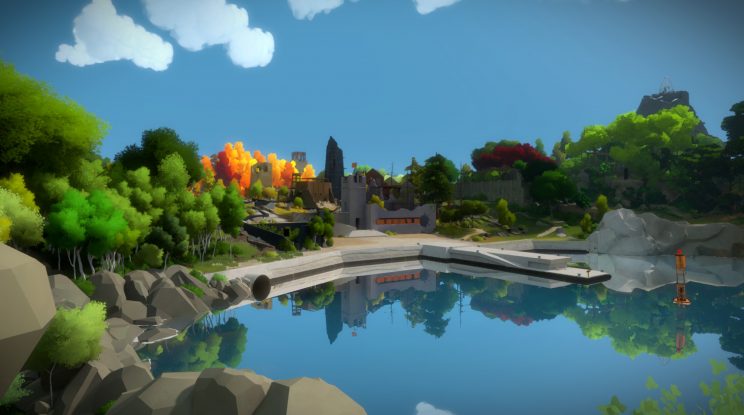2016 Games in Review
It’s been a long time since I have posted any reviews. I will confess that I have been so distracted by the goings-on in the U.S. government, that I haven’t been putting the effort toward the website that I should. The election is over, and regardless of my general dissatisfaction, it’s time to get back to work.
One of the things I have been meaning to do for the past year is to do some impressions on the games I have been playing, but I haven’t been able to export the screenshots from my Xbox as easily as I would like. I also don’t have any specialized software to deal with screen grabs from my PC, which means you only get a few pictures in this post. In the end, it was such a pain that I didn’t do it and eventually forgot. Now that 2016 is gone, and people need a little positivity in their lives, I thought a round-up of the games worth playing until 2017’s blockbuster titles come out might be in order. I’ve limited the list to games that I personally own or have played and enjoyed. I also purposely eliminated games that released in previous years that I finally played this past year.
In summary, 2016 was a damned good year for games. If you’re like me and game on a budget, check these out: most of them are frequently available on sale or have dropped in price since their release.
Firewatch
Originally released on PS4 and PC in February 2016, this eventually made it to the Xbox later in the year. I had never played a “walking simulator” before, and had heard nothing but good things about Firewatch. For those of you unfamiliar with “walking simulators,” these are games with strong narrative focus, but remove much of the agency that players normally experience in a video game. There’s no combat, very few puzzles, and a lot of dialogue. You play Henry, a man who ends up in Yellowstone in a watch tower to report fires to the park service and firefighters. I’m not going to spoil why you’re there, but suffice it to say, you’re running away from your life. Over the next 4-5 hours of Firewatch, you develop a relationship with Delilah, your neighbor in the adjacent watch tower. Here’s where Firewatch shines, though: that relationship is entirely up to you. Romantic, friendly, and adversarial are all choices you can make. You can even play through the entire game without ever once picking up the radio to talk to her. I would say that Firewatch is definitely worth the price of admission, and regularly goes on sale. You can pick it up from Steam (like I did), for PS4, or for Xbox One for $20.

Firewatch has a unique art style and a color palette that means many scenes seem to be in perpetual sunset.
Gears of War 4
Gears of War is one of the Xbox exclusives that draws gamers to that platform. This iteration takes the game back to its roots, in many ways, but also introduces awesome new characters and re-introduces you to old friends too. Set 20 years after the events of Gears of War 3, you pick up as J. D. Fenix, son of the protagonist from the first trilogy, and his fellow Outsiders. Almost immediately after you start, your village is attacked by an unknown enemy, and you start your quest to save everyone you can while uncovering the truth of what happened. Gears 4 is definitely a “bro” game, as it focuses on shooting, exploding, and chainsawing your way through enemies. Make no mistake, this game is rated Mature for a reason. Do not let your children play this without first checking it out. Your kids may be able to handle the gore and language, but better to be sure.
The story is predictable, but it works. The character personalities and the cinematic appeal make the game so much fun. There is also a focus on spectacle and “holy cow, did that just happen” that was over the top even for a Gears game. The best part of Gears 4? It felt like a Gears game. The gunplay, cover mechanics, active reload system, and set pieces had just enough nostalgia interspersed with the new to make it feel comfortable. I’m really looking forward to what the studio does with the sequel.
There are some negatives here that are worth mentioning. First, why in the world did they put Kait into a metal bra? This is 2017. I thought we were beyond that. I mean, she’s not sexualized, but she doesn’t need to be in “feminine” armor for us to recognize she’s a woman. Stop it. Seriously. Second, the 4-player co-operative mode from Gears 3 is gone, and I can’t for the life of me figure out why. There are scenes in which only 3 members of your party are around, but those circumstances seem arbitrary and could easily have been reworked to allow 4 playable characters without changing the story. Luckily, there is still a split-screen mode, so if you want to play with your spouse, significant other, or best friend (or cat), that’s always an option.
Gears 4 is also available on Windows 10 (PC), but I have it on good authority that you need pretty hefty hardware to really make the game shine. You can pick up physical copies for $60 at Amazon (as of the writing of this article) but it also regularly goes on sale. There is a Play Anywhere version of this that would let you buy one code for play on both PC and Xbox, but it doesn’t support cloud saving, so you can transfer your progress back and forth. I haven’t played this on Windows, so I don’t know if the Play Anywhere version works as advertised.
Stellaris
Stellaris is a space opera grand strategy game for the PC. Grand strategy is always a difficult genre to explain to anyone who doesn’t inherently know what it is, so let me try. In Stellaris, you command a race that has just stumbled onto faster-than-light travel and has their aims set towards building an interstellar empire. Your job is to manage their politics, economy, military, and foreign interests in such a way so as to meet the victory conditions of the game (usually occupy 60% of the habitable planets in the galaxy, destroy all the enemies, unite all the nations, etc.).

You’ll find many amazing things as you explore the stars around you. Yes, that is in fact a Ring World.
Stellaris is beautiful. I can’t think of any other way to explain it. You can zoom in on your planets and fleets and see them in remarkable detail, or you can zoom out and see things on a galactic scale. It’s also about the most mellow strategy game I have ever played. It plays out in real-time, but if you’re playing solo, you can pause at any time with the spacebar, which gives you enough time to react. Thankfully, nothing happens super fast in Stellaris. There are strict rules by which you can declare war. There’s no moving ships into an enemy’s territory under the guise of friendship and then declaring war. The game scores activities in such a way that you have to adhere to the “war score” in order to declare and win conflicts. It also controls how much you can ask in concessions when an enemy surrenders.
There is a pretty steep learning curve, but luckily, a number of YouTube videos exist that explain various mechanics and rules in a way that you can understand them. If this sounds fun, but also intimidating, check out some Let’s Play videos on YouTube by Quill18 or EnterElysium to get an idea of whether this is a game you would enjoy.
The mid-game slows down, but the recently released Leviathans DLC is supposed to resolve that. I haven’t played the DLC yet, but I plan on picking it up soon. At $40, Stellaris routinely goes on sale on Steam, so I would recommend checking it out during one of the 4 major sales throughout the year.
Tom Clancy’s The Division
The Division is one of those games you either love or hate. Another 3rd person cover-based shooter (like Gears 4), the Division plays more like an RPG. You play the role of an agent activated to help prevent a biological agent released in New York City. To be honest, that’s pretty much where the story stops mattering. Originally, the Division was a great game until you reached the maximum level and started the end-game content, and then it became a train-wreck. Over the past year, the developers listened and made changes to core game mechanics, loot drops, and overall balancing. Eventually, the Division really found its groove and was a ton of fun.
Think Gears of War + Diablo III and you would get a good idea of what the Division is: repetitive content with really good mechanics and fun with only the barest veneer of story to make it cohesive. When the Division works, it works. It took some really cool chances (some of which didn’t work out), which was really refreshing of a major AAA developer. For example, an entire sector of the game, labeled the “Dark Zone,” was home to the biggest and baddest of all the rioters and rogue agents. You could wander in and play nice, or you could gang up on other players to take their gear. It was completely lopsided and favored ambush tactics (kind of like real life), but the rewards for going could be high. In the beginning, most people avoided the Dark Zone like the plague, because the game rewarded people for cheating or finding active hacks, which infuriated all the players that didn’t want to resort to those tactics. The developers responded, made changes, and eventually the game rewarded other activities just as well (which is when the game found its stride and took off). Despite the fact that the initial idea didn’t work out, it was a really cool concept and I’m glad they tried it.
The price has dropped tremendously on this one, so you should be able to pick it up for $30 or less for PC, PS4, or Xbox One. There is no crossplay between consoles and PC, so pick the platform your friends are playing on.
The Witness
The Witness is probably my favorite game in 2016. The entire game is based around how far you can take the idea of the maze. Uniquely, there’s no tutorial or hand-holding in The Witness. Instead, you learn by doing. There are areas that are designated to teach you the various rules of the game, but there are no directions, no instructions, and very little guidance. There is no story to speak of (there is supposed to be one, but to be honest, I couldn’t find it). The atmosphere of the island and the puzzles are everything wonderful about the 90’s era adventure games like Myst and Riven, but without the annoying frustration of not knowing where the puzzles actually are.

No spoilers here. This is one of the first views you see upon starting up The Witness. Fans of Myst and Riven will enjoy the atmosphere as they explore.
For example, (minor spoiler, but it’s literally the first mechanic you learn) there are mazes with black dots that you quickly learn you need to ensure the line you draw covers all of them. The Witness does this by first forcing you to choose between two paths, one with a dot, one without. The maze won’t complete until you pick the path that covers the dot. The second puzzle gives you three options, one with a dot, two without. The puzzles become more complex until you understand the requirement: the path has to cover the black dots.
Solving an area in the Witness and seeing the results is so rewarding, especially when you do it without help or tutorial. This was another PC and PS4 game, but eventually made it to the Xbox late in 2016. It has a $40 price tag on Steam, but I think I put about 25 hours into it before I called it done. I didn’t solve every puzzle, and I admit I had to go look for help when I couldn’t figure out the rules of a couple of the different mechanics, but I can’t wait until I have forgotten enough about this game to go back and experience it again. I strongly recommend The Witness to anyone who enjoys puzzle games like Free Flow (mobile), Myst, or Riven, or just likes to experience the atmosphere of a game.
